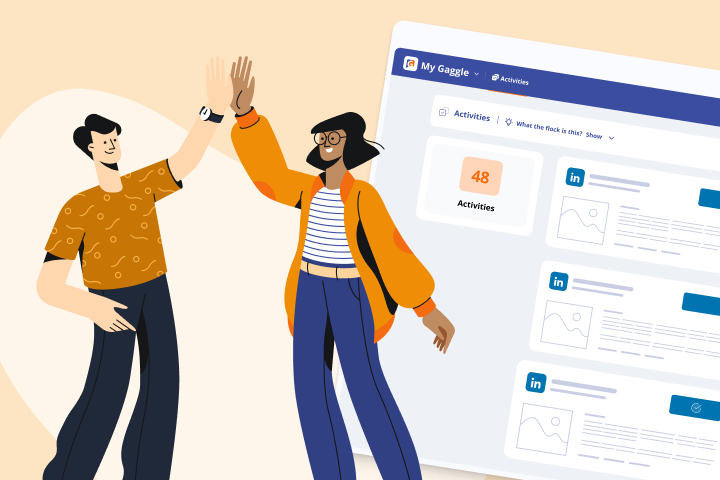A Complete Brand Awareness Marketing Strategy For 2024
Many marketers recognize the benefits of having a brand name like Nike or Amazon, but duplicating their brand awareness marketing strategies is unrealistic for most who don't have multimillion-dollar marketing budgets.
However, that doesn't mean that brand awareness marketing won't work for your company.
The problem with most brand awareness marketing strategies is that they're a compilation of various random marketing tactics rather than a repeatable, measurable, strategy.
Without a defined strategy, it's difficult to identify what's working and double down on that approach.
In this post, we'll provide an effective step-by-step brand awareness marketing strategy that you can use to build brand awareness among your target audience to increase sales and lower marketing costs.
What Is Brand Awareness?
Brand awareness is the public’s familiarity with a company.
Companies with strong brand awareness have an advantage over their competitors with weak brand awareness, as prospects with some level of familiarity with your brand are more likely to purchase your product/service over a completely unknown brand’s product/service.
There are different levels of brand awareness, and companies strive to achieve a high degree in each of the following aspects that contribute to the level of brand awareness:
- Brand Awareness Quality: The types of people that recognize your brand, ranging from ideal prospects actively searching for your product/service to irrelevant personas who will never have a need for your product/service.
- Brand Awareness Quantity: How many people recognize your brand.
- Brand Awareness Depth: How well the person knows your brand and its values and products/services.
To help you improve the quality, quantity, and depth of your brand awareness, we’ll provide a step-by-step brand awareness marketing strategy below.
Step-By-Step Brand Awareness Marketing Strategy
Rather than giving you a selection of various marketing tactics, this brand awareness marketing strategy will help you create a flywheel by establishing a repeatable, measurable workflow. This way, you’ll be able to produce compounding results from your brand awareness marketing methods.
Step 1: Establish Realistic, Measurable Goals
One of the key reasons most brand awareness marketing strategies fail is that they don't establish clear, attainable brand campaign objectives.
Without goals, it's impossible to optimize your strategy and improve performance. It's also not really worth the investment if it isn't aiding the overall business's goals.
Therefore, write down key brand awareness metrics that you plan to track and set goals for each of those metrics.
For example, you can track:
- Brand impressions.
- Brand name search volume.
- Audience growth (email signups, social follower count, etc.).
- Brand sentiment.
- Website traffic.
Then, the key to setting goals is to look at your current month-over-month growth for each of those metrics and set a growth rate goal about 10-20% higher than your existing month-over-month growth rate.
The key to goal setting is to create realistic goals. So, expecting your brand awareness to double within the next month is unrealistic, and you may shut down your program before it has time to gain traction – even if it is trending in the right direction.
Step 2: Map Out a Top of Funnel Marketing Strategy
The goal of all marketing efforts is to move prospects closer to the point of sale, though you can’t expect them to convert as soon as they first learn about your brand.
Many people aren’t ready to buy, and even if they have entered the buyer journey, you’ll need to build trust with them before asking them to convert.
Therefore, create a top-of-the-funnel (TOFU) marketing strategy that introduces them to your brand.
You can use a combination of content and paid marketing channels like social ads to increase brand awareness, but the main goal of this stage is to begin building a relationship with your ideal customer by providing value.
The best way to provide value is to simply answer their questions for free content.
Some of the specific types of content you can use at the TOFU stage include:
- Blog posts.
- Video content.
- Social media content.
- Checklists.
- Infographics.
For example, here at GaggleAMP, most of our TOFU strategy consists of organic blog posts and social media content that educates our audience on the topic of employee advocacy and engagement:
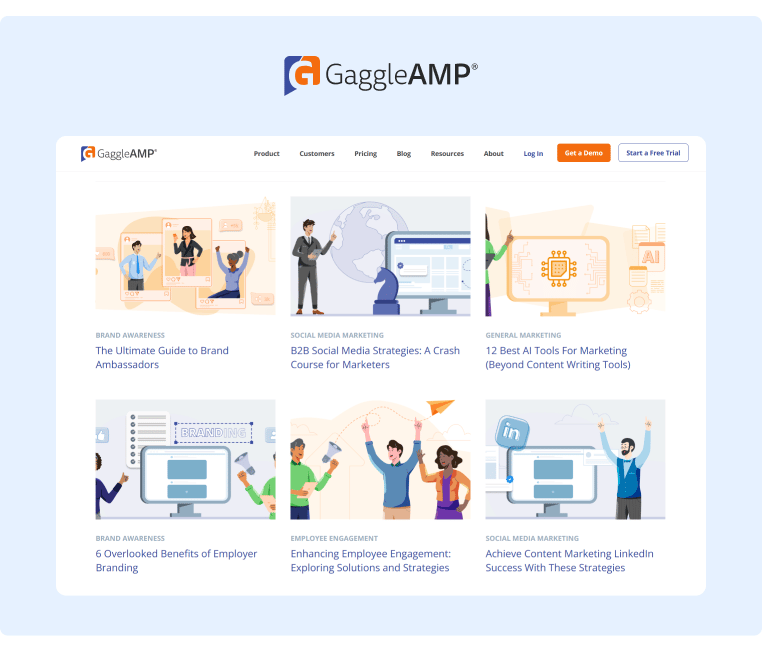
Source: GaggleAMP
You can also run paid social ads to improve brand awareness, though a simple impression of your brand's name and logo usually isn't as powerful as consuming a piece of content. This is because the content allows you to demonstrate your brand's authority on the subject and build trust, whereas the impression only improves recognition.
In other words, content tends to drive higher quality and depth of brand awareness, while paid ads tend to improve the quantity of brand awareness (it's much easier to receive 1,000 impressions than to convince 1,000 people to consume your content).
So, which of the above-mentioned types of TOFU content (blog posts, video content, social content, etc.) should you choose for your brand awareness marketing strategy?
There are two questions you can ask to select the best type of content for your brand awareness marketing strategy:
1. What Type of Content Do Your Competitors Use?
The strategies that work for your competitors will probably work for you as well. You can determine the answer to this question by signing up for your competitors' email lists, tracking their social media accounts, and following their blogs.
If you don't have time to manually execute this work, consider using a tool like Crayon to do it for you. You can also use a tool like Semrush to track your competitor's content and SEO strategies.
2. What Type of Content Can You Create Sustainably?
Consistency is key to building any kind of audience, so if you can't sustainably create the content week after week, the strategy won't work. For example, if your competitors are using video content, but you know you can't consistently create video content, choose a different form of content, like blog posts.
After you've selected the type of TOFU content you'll produce, you can amplify it with employee advocacy. Employee advocacy is when employees share branded content with their audience. This boosts the TOFU content's reach as it will reach all of your employees' networks.
While employee advocacy is highly effective at amplifying branded content, organizing an employee advocacy program and ensuring employees consistently share the right content at the right time can be difficult.
To solve this problem, we created GaggleAMP, an employee advocacy platform that allows managers to easily assign engagement activities and track employee engagement at scale.
You can learn more about GaggleAMP or schedule a demo today.
Step 3: Map Out a MOFU/BOFU Marketing Strategy
Marketers usually understand that brand awareness quantity (the number of people you reach) is important, though brand awareness quality and depth (who you attract and how well they know you) are arguably just as important, if not more important.
The TOFU marketing efforts you implemented in step two introduced the audience to your brand, and now you can use middle-of-the-funnel (MOFU) and bottom-of-the-funnel (BOFU) strategies to deepen the relationship with right-fit customers.
Some of the common marketing strategies you can use at this stage in the relationship include:
- Webinars.
- ABM campaigns.
- White papers and case studies.
- E-books.
- Presentation slides.
Here's a great example of a MOFU/BOFU piece of content:
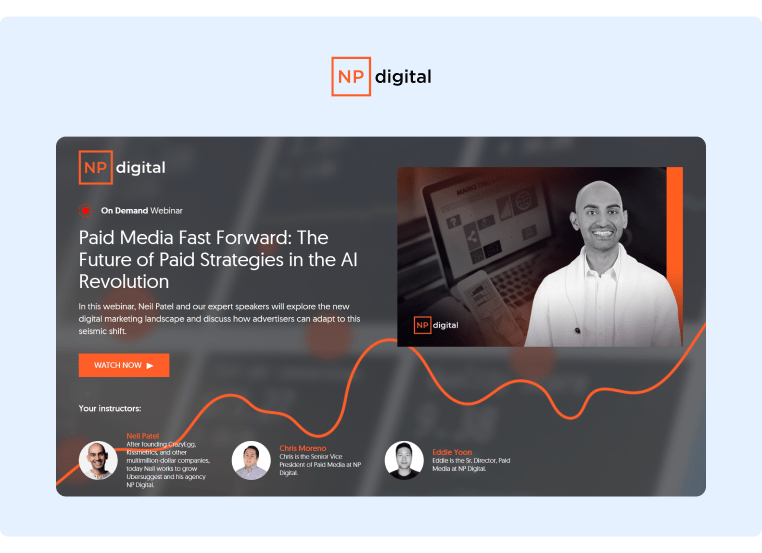
Source: NP Digital
Neil Patel also revealed on his podcast that webinars are some of their best-performing content.
At this stage, you can collect the person's email address in exchange for the MOFU/BOFU content to strengthen the relationship and keep them engaged through remarketing efforts.
Again, analyze the strategies your competitors use and select the method that you think is most sustainable for your marketing team if you're not sure what kinds of MOFU or BOFU marketing efforts to select.
Implementing MOFU and BOFU content into your brand awareness marketing strategy will help you see a higher ROI from your TOFU efforts, as you can engage and convert them. Otherwise, many of your TOFU visitors will visit your website but never return.
Step 4: Create a Repeatable Workflow Process
A major cause of failure for most brand awareness marketing strategies is simply a lack of consistency in both publishing schedule and messaging.
Publishing consistency is important to any content marketing strategy's success, as audiences won't remember who you are if you stop publishing for a period of time.
Messaging consistency is critical to brand awareness, as your audience will be confused if they see different value propositions each time they see your brand name. In addition, most people need to see a brand multiple times to remember it. If the messaging and brand feel is constantly changing, your audience might not even recognize your brand.
Fortunately, you can solve these problems with a repeatable workflow.
To get started, use a project management tool like Asana or Trello.
Then, upload your branding and messaging guidelines to ensure everyone produces similar content/imagery.
Next, create a publishing calendar with deadlines for each project and assign each team member a certain step within the process. You can add milestone deadlines to the calendar to ensure each step is completed on time.
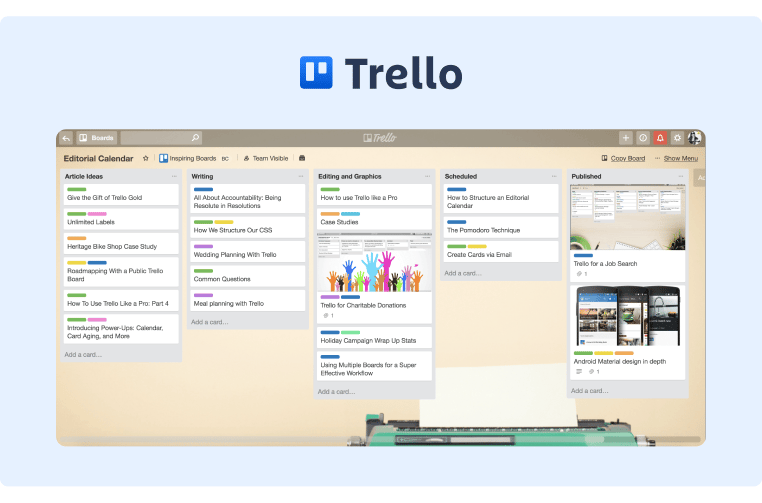
Source: Trello
Step 5: Measure Results and Adjust
Execute the plan outlined above for the next few months. If you don't give it enough time to collect data, it will be difficult to identify trends and see if it's growing in the right direction.
Once you've consistently executed for a few months, look at the metrics you identified in step one and see if they're trending in the right direction. To remind you, the brand campaign objective metrics are:
-
Brand impressions.
-
Brand name search volume.
-
Audience growth (email signups, social follower count, etc.).
-
Brand sentiment.
-
Website traffic.
One common problem we see is that brands measure the success of their strategies based on arbitrary industry benchmarks rather than growth trends.
Ideally, aim for a percentage month-over-month growth rate increase rather than a particular number. If you notice that your growth rate is increasing rapidly, that's a good sign.
The only drawback is that those metrics only provide insights into brand awareness quantity. To ensure your brand awareness strategy is also increasing in quality and depth, check that your sales and revenue data are also steadily increasing.
If your brand impressions are increasing, but they aren't contributing to sales volume or revenue, you might be attracting the wrong audience. Or, your marketing funnel might have some leaks, and you're not effectively moving them to the next stage of the funnel to deepen the relationship.
How To Increase Brand Awareness
Above, you created a flywheel that makes it possible to create a brand awareness marketing strategy that produces compounding growth.
In this step, we’ll show you various tactics you can add on top of your foundational marketing strategy to increase brand awareness at every step in your funnel.
Tip #1: Implement Employee Advocacy
If you’re posting content on social media, one easy way to get more out of your content marketing efforts is to ask your employees to engage with it and share it with their networks.
Employee engagement multiplies the quantity of brand awareness for each social media post for a couple of reasons:
-
All of your employees’ networks see your brand’s content.
-
When social media algorithms see that your post receives a lot of engagement, they typically interpret that as a positive signal and give your blog post more organic reach.
The quality of brand awareness generated from employee engagement is also much higher as the impressions are warm. This is because the people viewing the content already like, trust, and follow your employees, so they’re more likely to take any content recommendation from your employees more seriously.
Here’s a great example of employee advocacy in action.
In this case, the employee shared the content and stated why he was proud of the feature and how it works. You can read the full post to see his thoughtful comments:
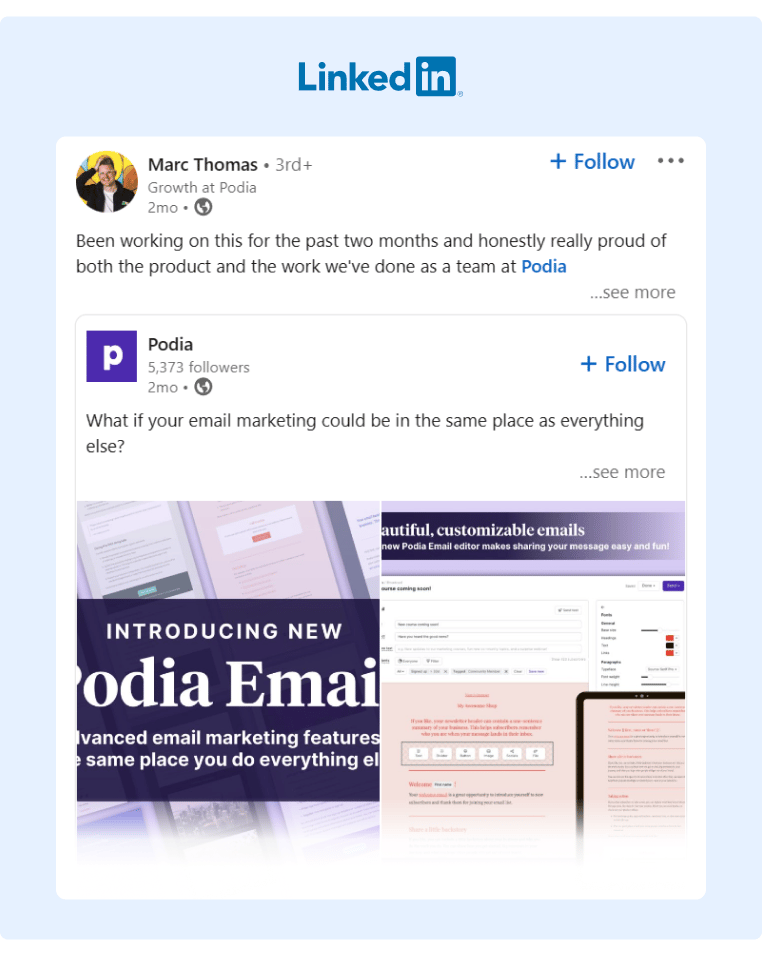
Source: Marc Thomas
The only drawback of employee advocacy is that it can be difficult to keep employees engaged for an extended period of time. Many don't have time to participate or are afraid they may say something off-brand.
As a result, engagement rates tend to drop off after a few weeks.
We experienced this challenge firsthand and created an employee advocacy platform to solve this specific problem.
Today, GaggleAMP allows you to assign specific engagement activities to specific employees.
Simply select one of our many engagement activities that specify a specific engagement action (like, share, reshare, comment, etc.) and the social platform (LinkedIn, X (formerly Twitter), Facebook, etc.).
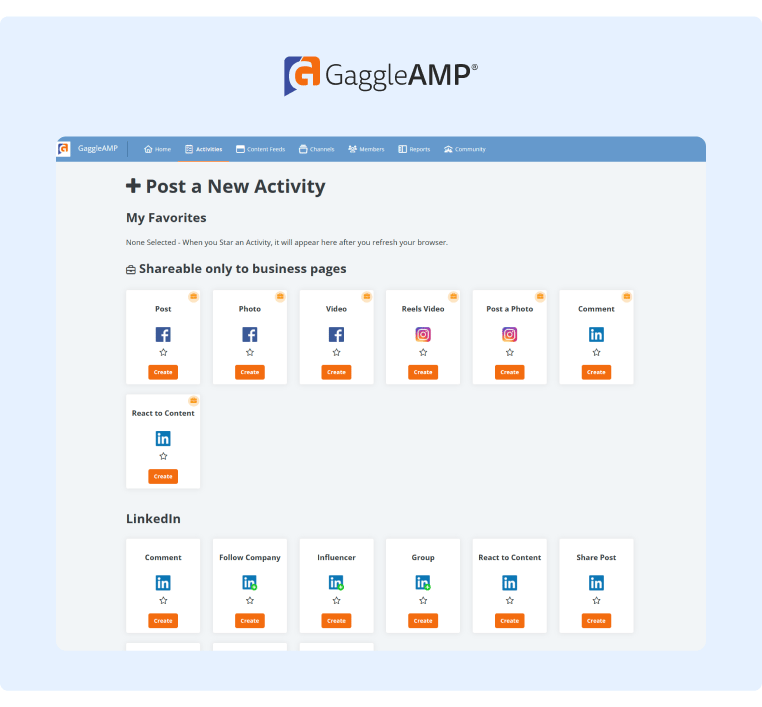
Then, fill out the engagement activity with details like a deadline and engagement instructions. In fact, you can even use our AI-Powered Paraphraser for Managers to create suggested text for the employees. This way, employees don't have to think of anything to write, and they can confidently publish the content knowing that the copy is pre-approved.
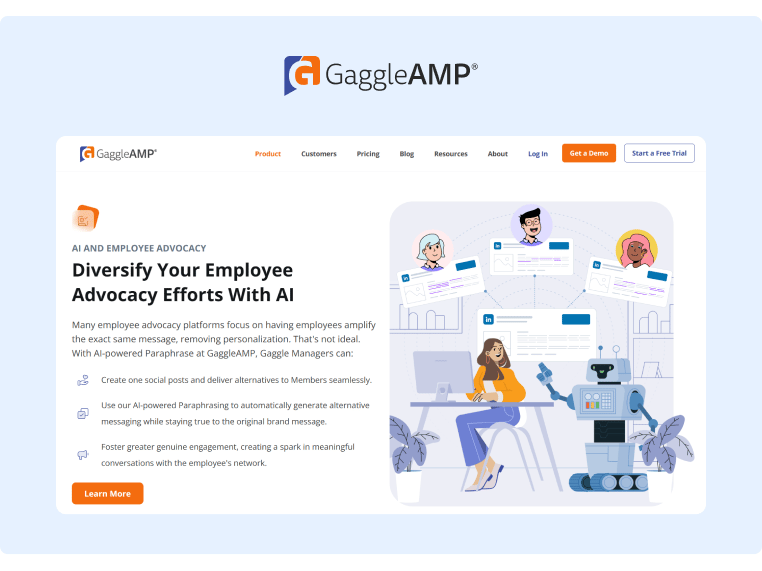
Once you've finished the engagement activities, you can assign them to specific employees or a group of employees (executives, the marketing team, etc.).
Employees then receive a notification (via email, Slack, or Microsoft Teams) that they have engagement activities waiting. Next, employees log into their personal Gaggle, view the engagement activities, and schedule them for publishing.
This process makes it easy for employees to participate in your employee advocacy program as it only requires a few moments of their time each month and very minimal effort.
As a result, employees consistently engage with social content, and you never have to send nagging emails begging them to engage.
To see for yourself if GaggleAMP is a good fit for your company, schedule a demo today.
Tip #2: Influencer Marketing
Partnering with people who already have a large, loyal following of your ideal prospects is another excellent method to increase quality brand awareness.
You can partner with influencers to share your existing content or create new content about your products or services.
While influencer marketing is a common strategy in B2C marketing, most B2B marketers aren't using it effectively as there isn't a platform to connect with great B2B influencers.
The best way to find relevant influencers right now is to look through your current customer list and see who has a large, loyal following of your ideal audience.
Then, reach out to them and offer your product or service for free if they can discuss how they use the tool and its main benefits on social media.
Here's a great example of this type of B2B influencer marketing:
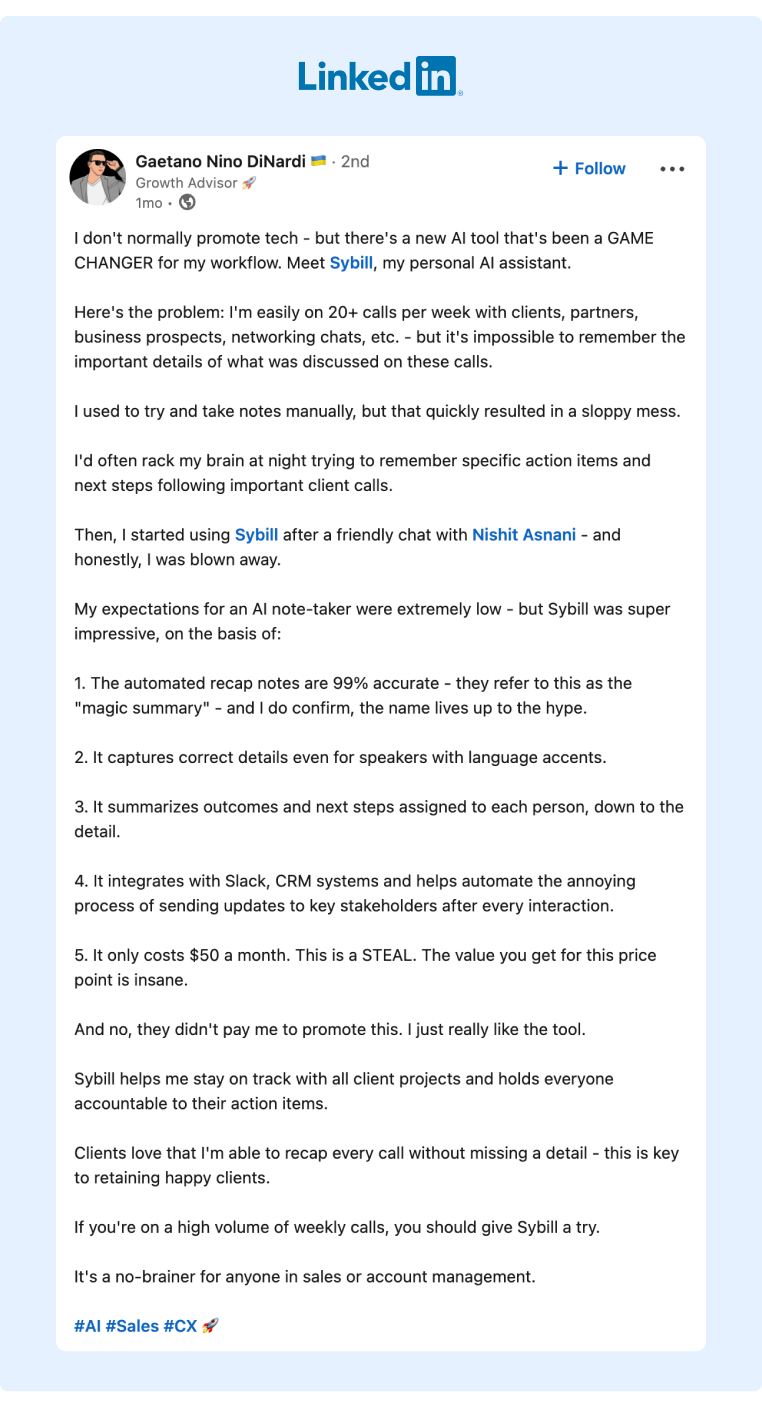
He also gives a shout-out to the tool he used to uncover the following messaging insights:
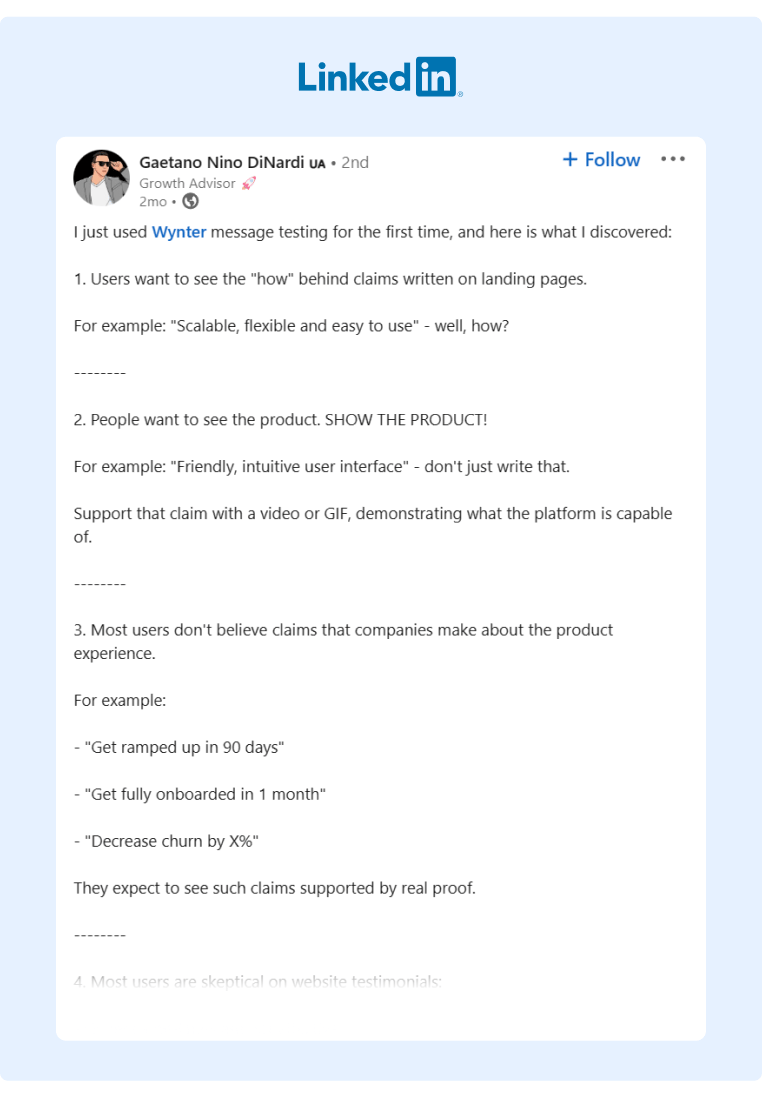
The key to mastering influencer marketing is partnering with the right influencers. Many marketers make the mistake of prioritizing influencers with large follower counts, audience loyalty is more important. Therefore, marketers that achieve the best ROI from influencer marketing usually partner with micro-influencers that have built strong trust with an audience that is highly relevant to your brand.
In addition, selecting influencers who are already using your platform is ideal because they'll understand the value of your product and articulate it more effectively.
If the influencer's audience doesn't trust the influencer or aren't a good fit for your product or brand, they likely won't move to the next stage of your marketing funnel.
Finally, if you don't want to launch a full influencer marketing campaign, you can simply ask these influencers to do a content collaboration with your brand.
For example, you can ask them to do a joint webinar or contribute to an article you're writing. If they participate in your content, they're more likely to share it with their audience, boosting your brand awareness and reach.
To figure out which influencers to contact, just look at the influencers your competitors or parallel brands partner with. For example, you'll see that Brian Dean has a significant following and has recently been on many different podcasts with well-known SEOs. So, he might be a great candidate to reach out to if you sell an SEO tool.
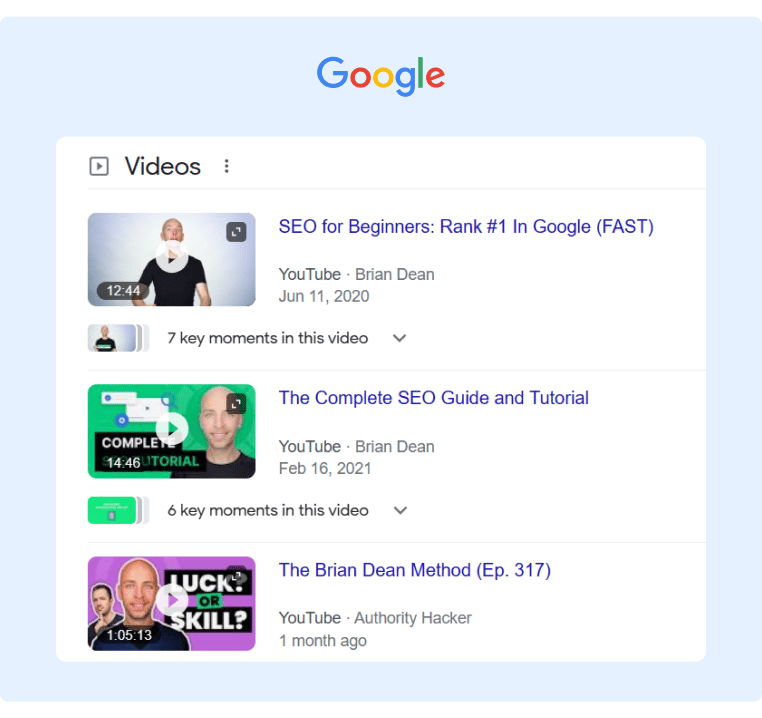
Source: Brian Dean
Tip #3: Repurpose Content
Creating more and more content is exhausting and resource-intensive, so one of the best ways to get the most ROI from your content is to repurpose existing content into different formats.
Here's a great example from the ad agency Single Grain. The founder recorded one video, and then the team repurposed it into various content formats.
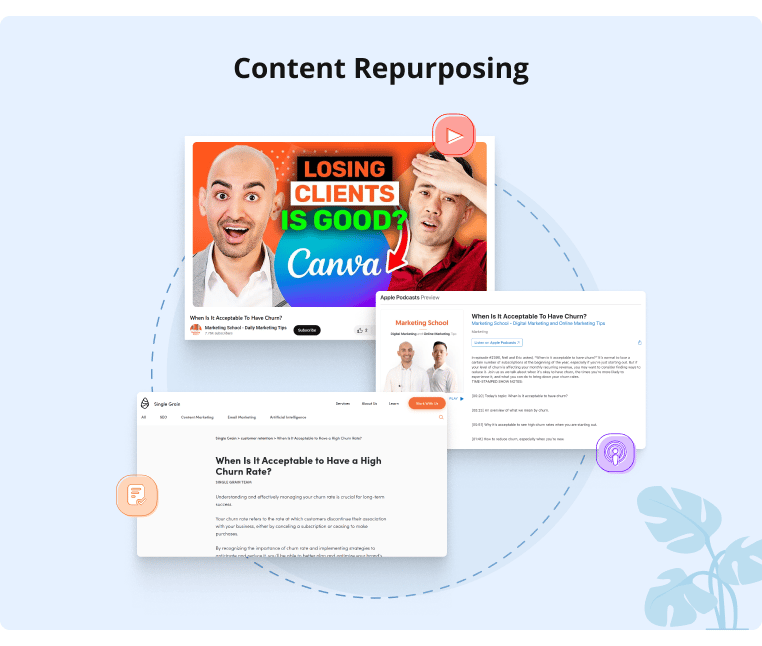
The beauty of content repurposing is that it doesn't require top-tier talent to execute, as the content ideas were already articulated in the original content.
This makes content repurposing much more cost-effective than content creation as you can even use AI to execute most of the repurposing.
Tip #4: Repost and Update Content
Similar to content repurposing, you can also revamp and republish your previous top-performing content.
For example, look at which blog posts are losing the most in rankings and update them:
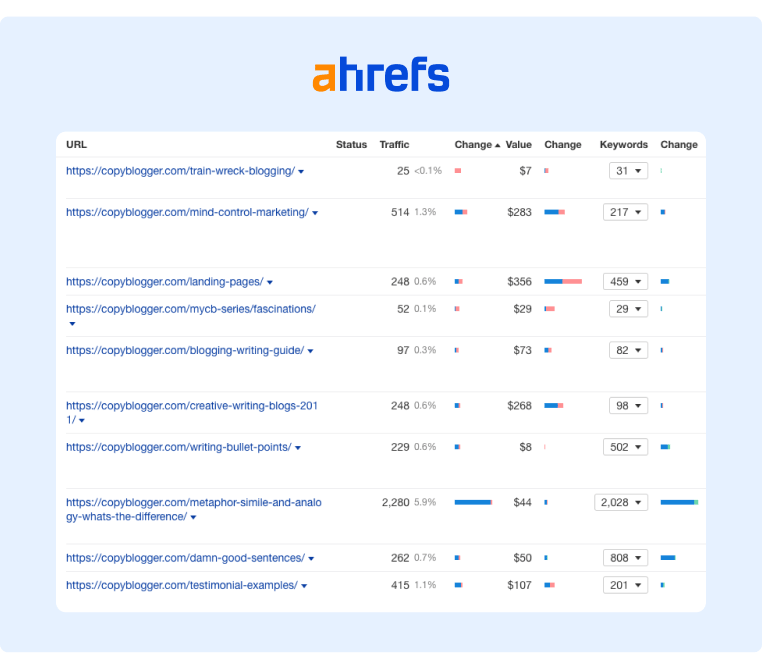
You can also simply republish your top-performing webinars, social media content, and even ads.
This is a key strategy that Justin Welsh used to grow his X (formerly Twitter) account to 400,000 plus followers. (Note that he uses the term repurposing, but he seems to be referring to the concept of reposting.)

Source: Justin Welsh
Tip #5: Run Paid Ads
Finally, you can always generate more reach by simply running paid ads to your existing content.
For example, this company is running an ad for one of its blog posts on X (formerly Twitter) to help the blog post achieve more reach:

Source: Addressable
The benefit of paid ads is that they produce a fairly immediate ROI and can help your content gain more organic traction.
How To Measure Brand Awareness
In the foundational strategy, we discussed a few different metrics you can track to gauge a brand's success, including:
- Brand impressions.
- Brand name search volume.
- Audience growth (email signups, social follower count, etc.).
- Brand sentiment.
- Website traffic.
Tracking the effectiveness of awareness campaigns is notoriously difficult, as you can't always tie it back to a specific metric. In fact, most key brand awareness moments occur on dark social and via word-of-mouth marketing. So, in addition to tracking metrics, also watch general revenue and sales growth trends.
While stakeholders may counter that other marketing efforts are contributing to sales and revenue growth, it's highly likely that your brand awareness efforts are key if the above-mentioned metrics are trending at a similar growth rate as your sales and marketing metrics.
It's also important to realize that brand awareness is a long game, and you won't see an immediate ROI. This is critical to point out to stakeholders as you pitch the idea of a brand awareness marketing strategy to them so that expectations are aligned.
Take the First Step in Your Brand Awareness Marketing Strategy Today
If your brand awareness campaign isn’t performing as well as you hoped it would, it’s probably because you’re using a collection of tactics rather than a structured strategy with a clearly defined marketing funnel.
To solve this problem and achieve a better ROI from your brand awareness marketing strategy, follow the steps above.
If you want to further amplify your brand awareness, our favorite tactic is leveraging employee advocacy. To learn more about how your team can benefit from an employee advocacy program, schedule a demo of GaggleAMP today.



